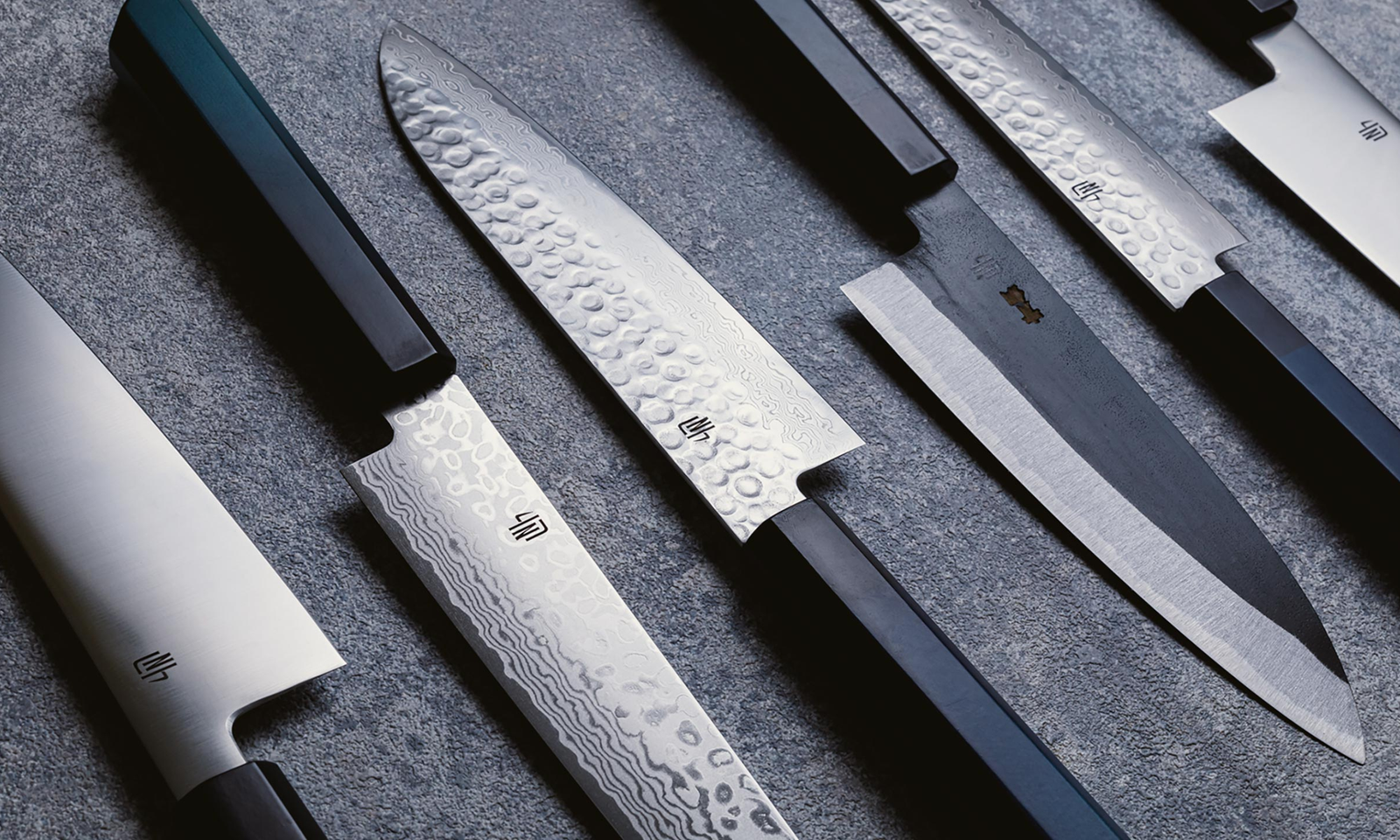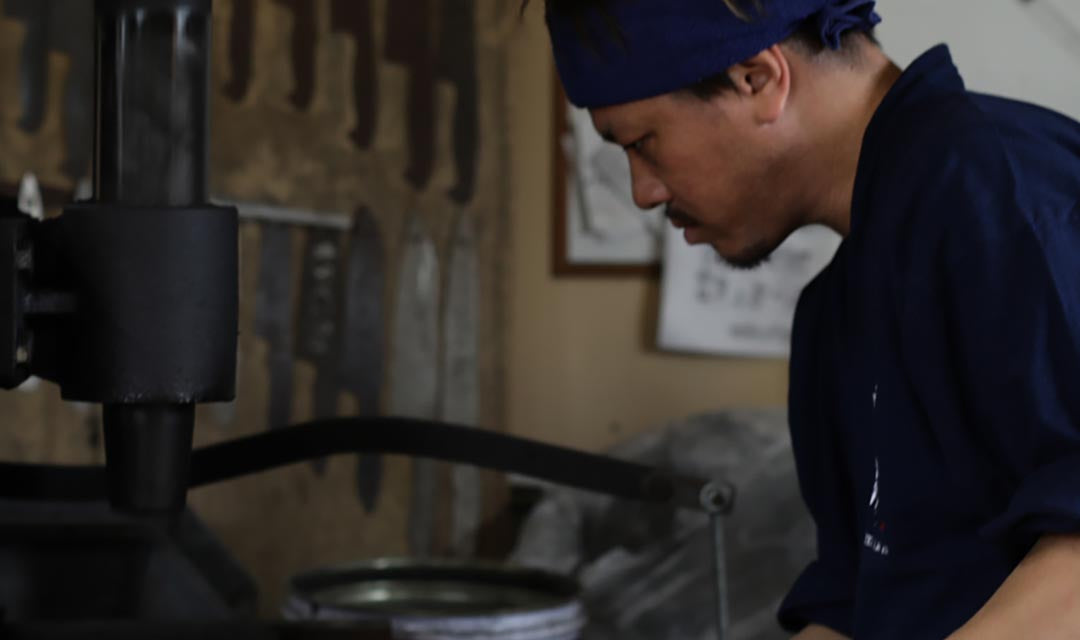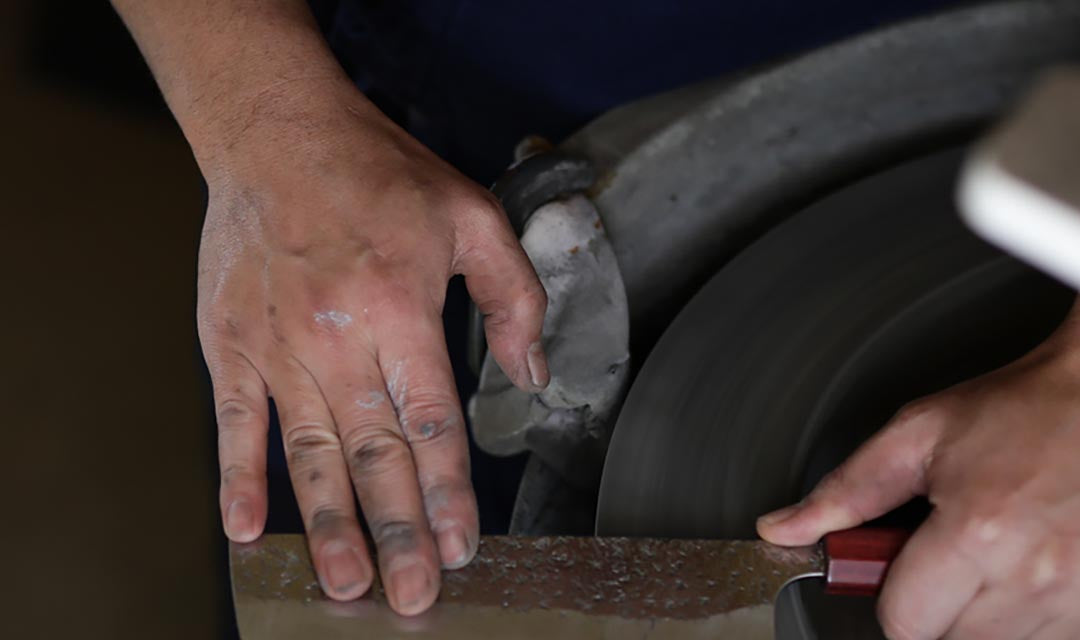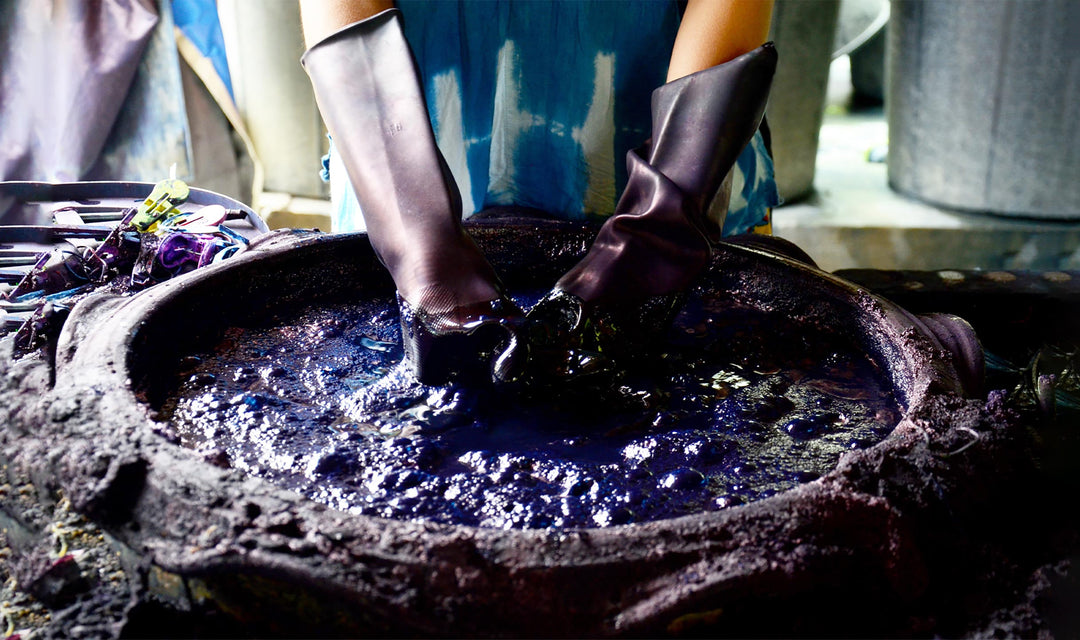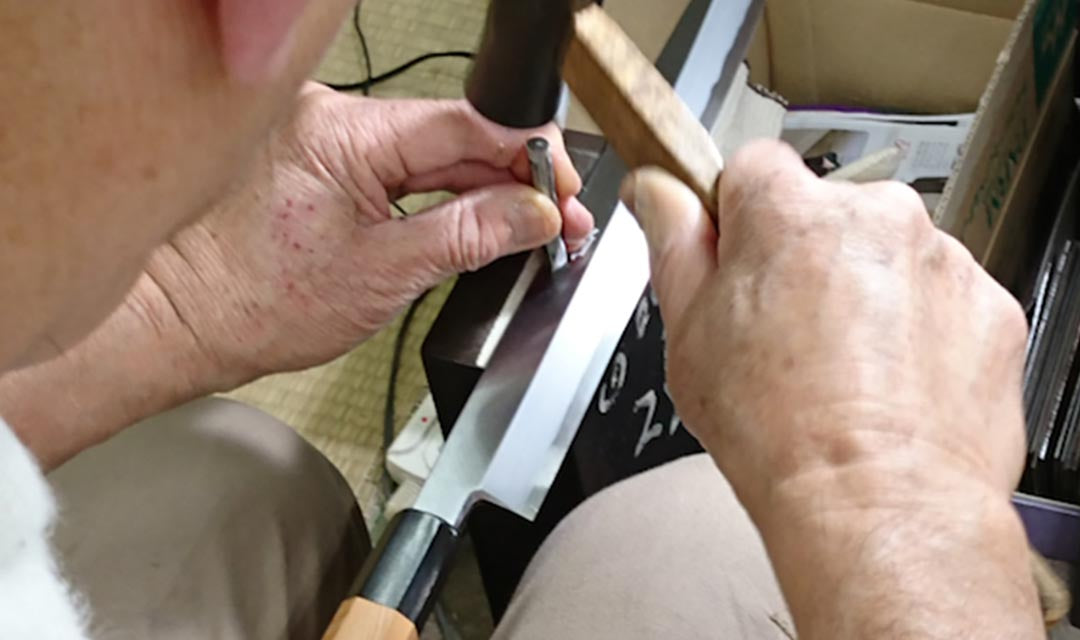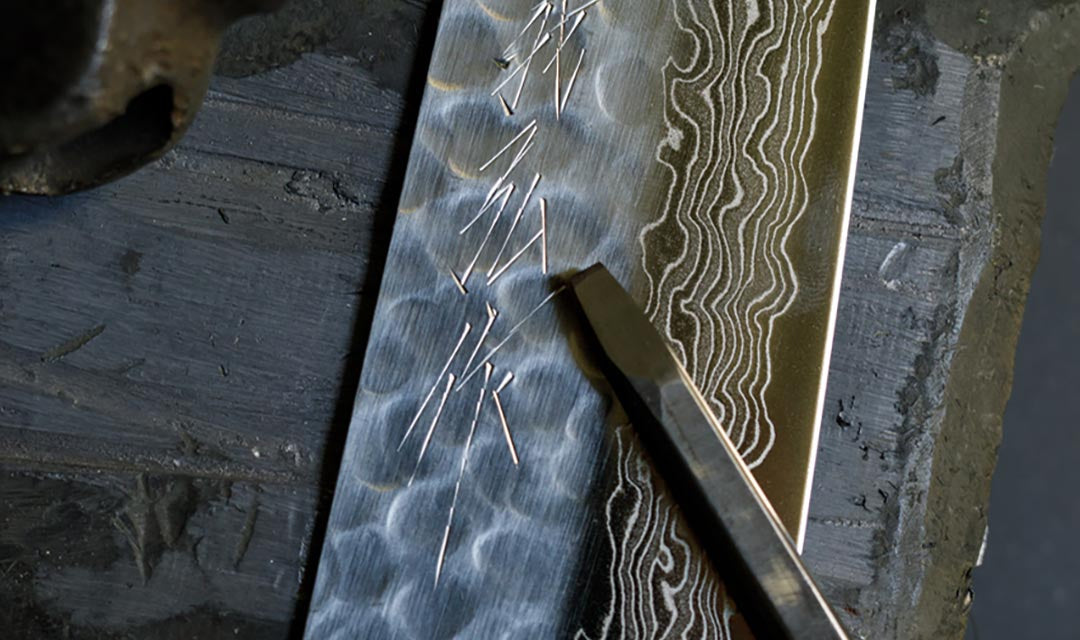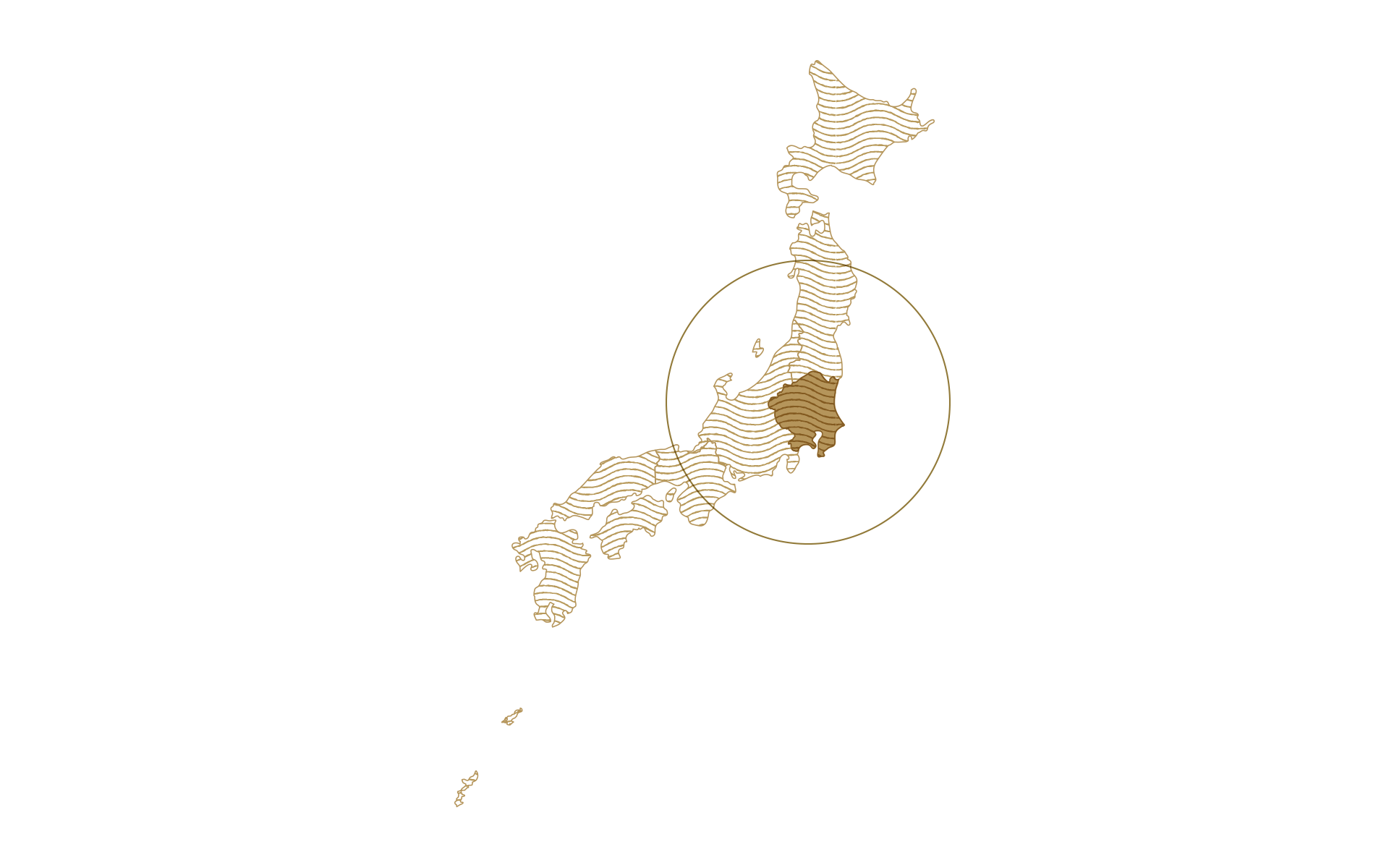About the Senko-Aitenmoku Series
The blade is made by Masaru Kurosaki, a leading Japanese forging craftsman. The main characteristics of this craftsman, who has been featured in many TV programs and has fans all over the world, are the unique tsuchime design that he hammered into the blade, and the overwhelming sharpness of the Super Gold HSS steel, a high-grade steel material. The "Senko" series is a beautiful series of blades with a hammered design on the blade that is based on the motif of "Hikari" (light). Each blade is handmade by a traditional craftsman, so the production quantity is limited. The handle was developed by Teruyuki Sakamoto of Edit Japan, a producer of traditional Japanese crafts, together with Mai-Kobo, a group of craftsmen in Tokushima Prefecture who have a special technique of "indigo dyeing of wood. This time, the indigo-dyeing technique is combined with tenmoku, a pottery technique, and kanshitsu, a lacquering technique, to create a unique look that is easy to grip due to its uneven surface and indigo, which is said to have antibacterial properties. The unique features of this product are the uneven surface, which makes it easy to grip, and the indigo, which is said to be antibacterial. Please take a look at this one-of-a-kind collaboration of Mr. Kurosaki's "Senmoku" and indigo-dyed "Tenmoku" knives.
About the Sheath
Originally, Masaru Kurosaki's knives did not have sheaths, so Edit Japan developed original sheaths for them. All of the sheaths are unified by the Kiritsuke-gata, a shape with an angle at the tip of the blade. The cross section of the sheath is designed to be two-sided, so that the bright part of the tenmoku and the shadowy part of the tenmoku stand out. To prevent the pin inserted into the scabbard from being lost, a hole is drilled in the pin and scabbard, and a navy leather string is used to tie the pin to the scabbard.
Personalization
The blade of this product is engraved with the name of Mr. Masaru Kurosaki.
